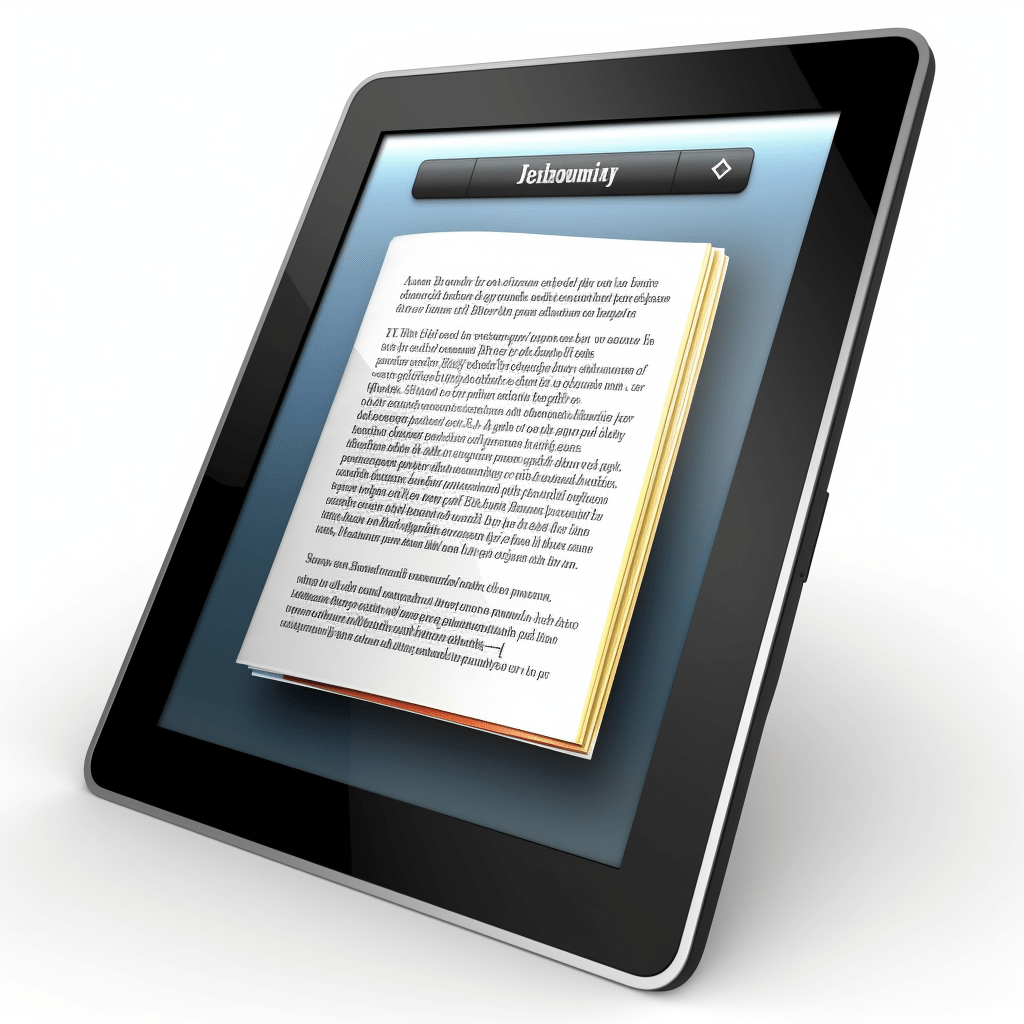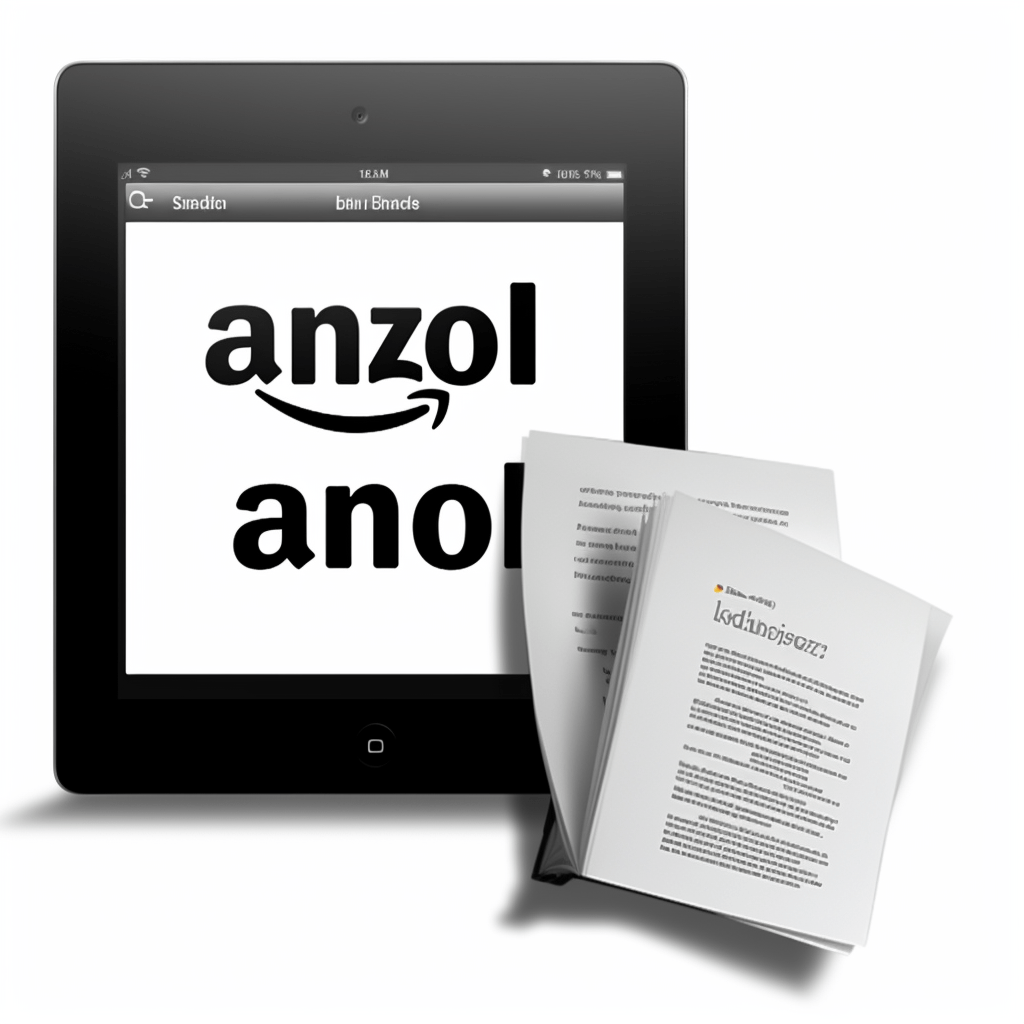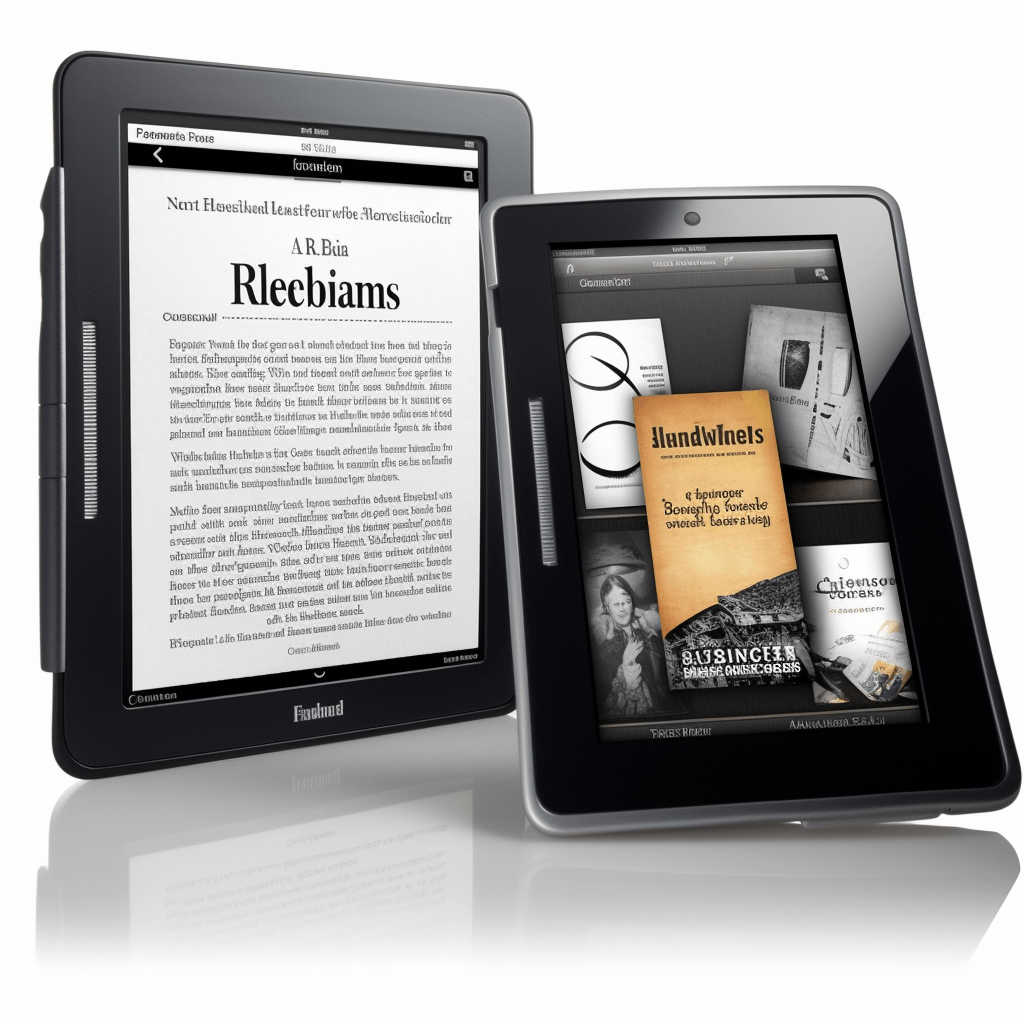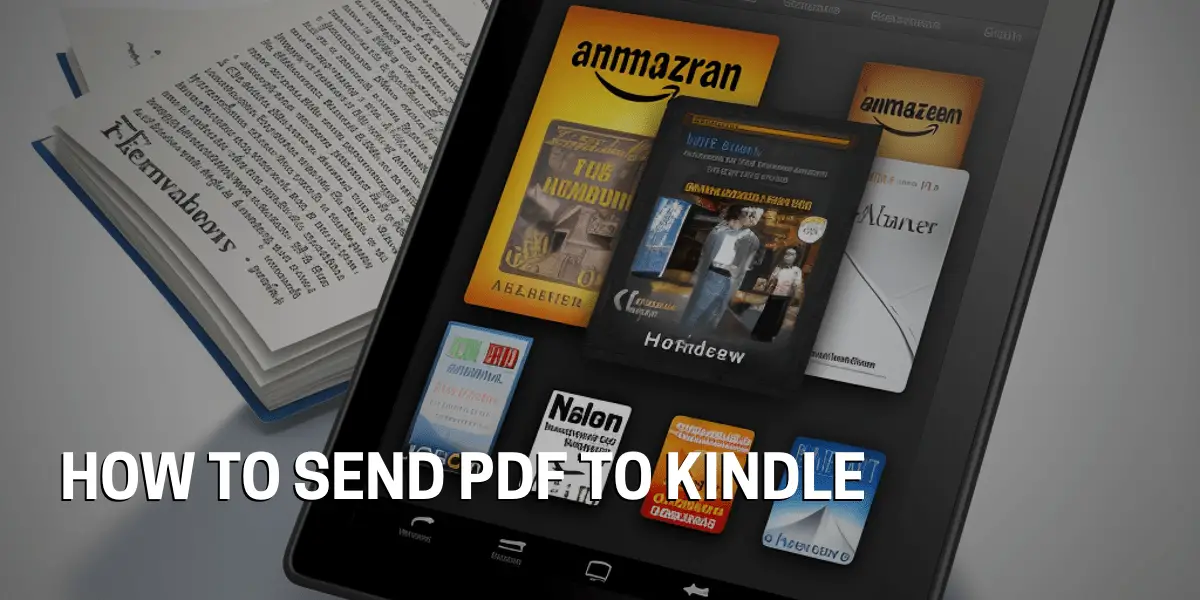Sending a PDF to Kindle
When it comes to sending PDFs to Kindle devices, the process can be a bit intimidating at first. It’s important to understand the different methods of transferring PDFs to your device, as well as the necessary information you’ll need to complete the process.
The most common methods of sending a PDF to Kindle are via email or through an app. When sending a PDF via email, the first step is to locate the recipient’s Kindle email address. This can be found on the Amazon website.
Once you have the email address, you can attach the PDF file to an email and send it to the address. If you choose to use an app to send the PDF to Kindle, you’ll need to enter a username and password.
Once you’ve logged into the app, you can then upload the PDF file and send it to your device. Once you’ve gathered all the necessary information, it’s time to actually transfer the PDF to the Kindle.
Depending on which method you’ve chosen, you’ll need to either click the ‘Send’ button on the email or click the ‘Upload’ button in the app. Once the PDF has been transferred, it will be available to view on your Kindle device.
Now that you know how to send PDFs to your Kindle device, it’s time to start looking for PDFs to transfer. There are many sources available online, such as websites and online libraries, that offer free PDFs. With a bit of research, you’ll be able to find the PDFs you need to get the most out of your Kindle device.

Sources for PDFs
Online libraries, such as Project Gutenberg and Google Books, provide a wealth of free content in PDF format. Search engines like Google and Bing can be used to search for relevant PDFs. Personal collections can also be accessed, with many users happy to share their PDFs.
Amazon’s Kindle Store allows users to purchase and download books directly to their device. With an array of content available in PDF format, users can find the perfect book for them.
Amazon Kindle Store
With the Amazon Kindle Store, users can find and access a wide variety of content. From books to magazines and newspapers, the Amazon Kindle Store has something for everyone.
It also makes downloading content easy, with all content available for direct download to a Kindle device or compatible app.
With its expansive selection and easy access, the Amazon Kindle Store is a great resource for those looking for digital content.
Online PDF Library
With the Amazon Kindle Store, users can easily download content to their devices. But what if you have personal documents or other materials you want to access on your Kindle device? Fortunately, there are online PDF libraries that can provide an easy access to a variety of sources.
These libraries offer a selection of PDFs that can be downloaded and sent to a Kindle device. This includes newspapers, magazines, books, and even personal documents.
Not only is accessing online PDF libraries convenient and easy, but transferring the documents to a Kindle device is just as simple.
Personal Documents
When it comes to accessing digital content, having access to different sources is essential. With Amazon’s Kindle Store, users have a wide selection of books, magazines, newspapers, and more. But what if you have personal documents or other material you’d like to access on your Kindle device? Fortunately, there are online PDF libraries that can provide an easy access to a variety of sources.
Why send a PDF to Kindle? Sending personal documents to Kindle is a great way to access your favorite documents on the go. Plus, transferring documents to Kindle is simple and quick. To send a Personal Document to Kindle, the file must first be converted to the .mobi format.
Once converted, the document can be sent to your Kindle device or Kindle reading app via email or USB. Not all documents will be compatible with Kindle, so be sure to check that your document is supported before sending.

Compatible File Types
With Amazon’s Kindle Store, users have a wide selection of books, magazines, newspapers, and more. But what if you want to access personal documents or other material on your Kindle device? It’s easy to send a PDF to Kindle, but it’s important to know which file types are compatible.
When sending a PDF to Kindle, the most compatible file types are PDF, AZW, DOCX, TXT, HTML, RTF, and MOBI. Kindle also supports image formats like JPEG, GIF, PNG, and BMP. For PDFs, they must be DRM-free in order to be read on the device. This ensures that the documents can be viewed on the Kindle.
There are a few other things to consider when sending a PDF to Kindle. The PDF file size must be under 50MB, and certain complex documents such as newsletters, calendars, and magazines may not be supported.
How do you convert a PDF to the .mobi format? This will be discussed in the next section. In the meantime, it’s a good idea to become familiar with the supported file types for sending a PDF to Kindle.
.mobi
When it comes to accessing digital content on Kindle devices, the .mobi file format is the ideal choice. This format is specifically designed for Amazon’s Kindle Store, and is compatible with most Kindle devices and apps. By using the .mobi file type, readers can enjoy a seamless and optimized reading experience. For non-Kindle devices, .mobi files can also be converted to other popular e-book formats.
How does this format compare to other file types? It is supported by virtually all devices, including Kindle Fire and Kindle Paperwhite, and offers a wide range of benefits. Additionally, .mobi files are secure and protected from theft or piracy. This ensures that the content is accessible only to the user who has purchased it.
The .mobi file type is the most versatile and user-friendly option for digital content on Kindle devices. It is also the best choice for Kindle users as it provides a secure, optimized and accessible experience. Furthermore, it is compatible with a wide range of devices, ensuring that readers can enjoy their digital content with ease.
.azw
The .azw format is compatible with most Kindle apps and devices, including the Kindle Fire and Kindle Paperwhite. Furthermore, .azw files are highly secure and protected from piracy or theft, ensuring that the content is only accessible to the user who has purchased it.
For those who don’t own a Kindle device, the .azw format can be easily converted to other popular e-book formats. This allows users to access the content on a variety of devices and platforms.
When it comes to sending PDFs to a Kindle device, the PDF must first be converted to an .azw file. There are several options for doing this, including online file converters and Kindle software.
Why .pdf files are so popular is because they are an incredibly versatile document format. .pdfs are the perfect way to share documents in a format that can be easily accessed on almost any device. They can be used to store and print user manuals, resumes, contracts, and other important documents.
Furthermore, .pdf files can be viewed on tablets, laptops, and smartphones, making them a great choice for sharing documents between users with different devices. Additionally, .pdfs are highly secure and protected from piracy or theft, ensuring that the content is only accessible to the user who has purchased it.
With all of these features, it’s easy to see why .pdf files are such a popular choice for documents that need to be shared.

.azw3
.azw3 files are specifically designed to be used on Kindle devices, making them an ideal choice for those who want to read books and other documents on the go. These files are much smaller in size than PDFs, meaning they can be downloaded quicker and take up less space on your device.
They can be easily converted from PDFs using online converters, allowing them to be read on Kindle devices. Furthermore, .azw3 files can be sent directly to a Kindle device, providing readers with instant access.
File Size Limitations
Knowing the file size limitations and the different methods of sending PDFs can make the process simpler and more efficient. How to send a PDF document to a Kindle device is fairly straightforward. First, it is important to be aware of the maximum file size allowed when sending PDF documents to a Kindle device. Most Kindle devices can accept PDF documents up to 50 MB in size. If the PDF document exceeds 50 MB, it can be sent via email to the Kindle device, but there may be additional fees associated with this. To avoid any additional fees associated with larger files, users can compress the PDF document or split it into smaller sections before sending it. It is also important to note that the PDF document must be in an acceptable format before sending it to a Kindle device.
Sending a PDF to Kindle
Knowing the maximum file size limitations and the different methods of sending PDFs can make the process a lot easier and more efficient. Sending a PDF to a Kindle device is actually quite simple. First, it is important to understand the maximum file size allowed when sending documents to a Kindle device. Most Kindle devices can accept PDF documents up to 50 MB in size.
If the PDF document is larger than 50 MB, it can still be sent, however, there may be additional fees associated with this. To avoid any additional fees, users can compress the PDF document or split it into smaller sections before sending it.
It is also important to note that the PDF document must be in an acceptable format before it can be sent to a Kindle device.
With this in mind, I will now discuss the different methods that can be used to send a PDF document to a Kindle device.
We all know the importance of being able to transfer files easily from one device to another. For those who are using Kindle devices, transferring PDF files can be a bit of a challenge. However, with the right information and tools, this process doesn’t have to be intimidating.
One of the most common methods of transferring PDFs to a Kindle device is by email. All you need to do is send the PDF document you wish to transfer to the Kindle device’s email address.
It is important to note that the PDF documents must be in a compatible file format for the Kindle device. Furthermore, PDF files larger than 50MB cannot be emailed to a Kindle device.
If the PDF file is not compatible with the Kindle device, you may need to convert the file to a compatible format before emailing it.
USB
We all know the importance of being able to transfer files quickly and easily. For those using a Kindle device, transferring PDFs is no exception. Transferring PDFs to your Kindle device is both simple and fast, and all you need is the right information and the right tools.
One of the best ways to transfer PDFs to your Kindle is via USB. With the USB cable, you can easily connect your Kindle to your computer and then quickly drag and drop the PDFs you want to transfer. Alternatively, you can use a file manager like Windows File Explorer or macOS Finder to move the PDFs over. USB is a great option as it is both fast and efficient and you don’t need to worry about the file size.
USB Drive
It is essential for Kindle users to be able to transfer files quickly and easily, and transferring PDFs is no different. One of the most straightforward methods of sending a PDF to a Kindle is connecting a USB drive.
However, it is important to ensure that the USB drive is compatible with your Kindle model, and that the PDF file is in the correct format for your Kindle.
Once you have confirmed that the USB drive and PDF file are compatible with your Kindle, you can begin the transfer process.
But how do you make sure that your USB drive is compatible and that the PDF file is in the correct format?
Overdrive App
Transferring PDFs to a Kindle can be intimidating, but the Overdrive App helps make it easier. How can users quickly and easily transfer PDFs to their device? It is available for iPhones, iPads, Android devices, and Windows 10 devices, and can be downloaded from the App Store or Google Play Store.
To get started, users will need to create an account and then log in with their username and password. Once logged in, they can begin transferring their PDFs to their Kindle.
It is also important to make sure that the USB drive and PDF file are compatible with the Kindle model before beginning the transfer process.
Tips for PDFs on Kindle
When it comes to transferring PDFs to a Kindle, the first step is to use the Convert to Kindle feature. As the name suggests, this feature allows users to convert PDFs into Kindle-compatible formats such as AZW or MOBI. This ensures that the PDFs appear correctly on the Kindle’s screen and are easy to read.
Next, users need to utilize the Send to Kindle feature. This feature is available on many devices, and it allows users to easily send PDFs directly to their Kindle. It is a quick and simple process that involves selecting the PDF and then sending it to the Kindle.
Finally, users should optimize their PDFs for Kindle reading. This involves making sure the PDF file is properly formatted, that the font size is appropriate, and that the images are properly aligned. This will help ensure a smooth and enjoyable reading experience.
Change font size
When it comes to making PDFs easier to read on a Kindle, the font size is key. Adjusting the font size to make it easier to read is one of the first steps users should take.
They can also adjust the text size options on the Kindle to further adjust the font size of PDF files. This will further increase the readability of the PDFs on the Kindle.
Finally, users should customize their experience by changing the font size of PDFs on the Kindle to suit their own preferences. This will help them get the best possible reading experience from their Kindle. With these tips, users can easily make PDFs more readable on their Kindle and enjoy the best possible reading experience.
Change orientation
The process of sending PDFs to a Kindle can be tricky for those who are unfamiliar with the process. Changing the orientation of a PDF is one of the most important steps in the process, and understanding the different orientation options is key. Fortunately, it is straightforward to adjust the orientation settings for PDFs sent to Kindle. There are two main options when it comes to orientation: portrait or landscape. Portrait orientation is when the PDF is displayed in a vertical format, while landscape orientation is when the PDF is displayed in a horizontal format.
Knowing how to change the orientation is important for ensuring that PDFs are properly displayed on the Kindle. When it comes to viewing PDFs in the desired orientation when sent to Kindle, there are several steps users should take. Firstly, they should check that the PDF is compatible with the Kindle before transferring it.
Then, they will need to adjust the settings on the Kindle to ensure that the PDF displays correctly in the desired orientation. This can easily be done by adjusting the text size options on the Kindle. Finally, users should customize their experience by changing the font size of PDFs on the Kindle to suit their own preferences. This will help them get the best possible reading experience from their Kindle.
With these tips, users can easily make PDFs more readable on their Kindle and enjoy the best reading experience.
Adjust margins
Understanding how to adjust the margins of a PDF is essential to ensure the document looks the way it should when viewed on the Kindle. Knowing how to adjust the margins can also help to customize the reading experience and make PDFs more readable.
When adjusting the margins of a PDF, there are a few important things to consider. Firstly, it is important to understand the margin settings when sending a PDF to Kindle. There are a variety of margin settings available, and each one can affect the overall look of the PDF.
It is also important to be aware of the customizing options that are available. This will allow users to adjust the margins to their preferences and get the best viewing experience.
Once users have a good understanding of the margin settings, they can then begin to adjust the margins of the PDF. This can be done by changing the text size options on the Kindle.
This will ensure that the PDF is displayed correctly, with the desired margins. Finally, users can customize the experience further by changing the font size of PDFs on the Kindle.
Troubleshooting PDFs on Kindle
When it comes to sending PDFs to Kindles, troubleshooting is a must. With the right steps, you can make sure your PDFs are ready to go. The first step is to check the Kindle’s compatibility with PDFs. Before sending any PDFs, make sure that the device can handle the file type. If not, you’ll need to convert the PDFs into a compatible format.
Next, it’s important to check the margin settings for the PDF. This will help to customize the reading experience and make PDFs more readable. Adjusting the text size and font size on the Kindle can also help to make the viewing experience more personalized.
Checking compatibility and margin settings are essential for sending PDFs to Kindles. After verifying the file type, it’s time to customize the viewing experience. Here, adjusting the text size and font size can be beneficial.
If you’re still having trouble sending PDFs to your Kindle, you may need to contact Kindle support for assistance. They are available 24/7 and can offer helpful advice on how to troubleshoot and send PDFs.
Verify file type
When it comes to sending PDFs to Kindles, it’s important to make sure the file is compatible with the device. To ensure an optimal experience, users should verify the file type, check the file format, confirm the file size, and check file compatibility.
Verifying the file type is the first step. It’s essential to make sure the PDF file is compatible with the Kindle device. Once the file type is confirmed, users can move on to checking the file format.
This will help to ensure that the PDF file is in a format that is compatible with the Kindle device. The file size is also an important factor to consider. If the file size is too large, it may not be able to be transferred to the device.
To make sure the file size is not too large, users should check the size of the PDF file before sending it to the Kindle. Finally, users should check the file compatibility to make sure the PDF file is compatible with the Kindle device’s operating system.
Restart device
When sending PDFs to Kindles, it is important to take a few steps to ensure a successful delivery. A great place to start is by restarting the device. This can help reset any temporary errors that could be preventing the PDF from transferring.
Disconnecting and reconnecting the USB cable can also help reset the connection and make sure the PDF is properly transferred. Check that the USB cable is properly connected to both the computer and the Kindle and is recognized by the computer.
Users should make sure they have the latest version of the Kindle software installed on their device. This can help ensure that the PDF is properly transferred. Additionally, verify there are no compatibility issues that could prevent the successful transfer of the PDF.
Update software
Checking for updates is the first step. Simply open the “Settings” menu and select “Device Options.”
If any available updates are found, it is possible to download them from the “System Updates” menu.
Once the updates have been downloaded, they can be installed by selecting “Install Now” from the same menu.
It is also important to check that the USB cable is properly connected to both the computer and the Kindle.
With these simple steps, users can be sure that their PDFs will be successfully sent.
FAQs
What is the best way to send a PDF to my Kindle?
Sending a PDF to your Kindle can be a confusing process. But with the right knowledge, it is a straightforward task. Understand the different methods for transferring a PDF to a Kindle device, as well as the advantages and disadvantages of each. The most popular option is to email the PDF to your Kindle account. This method can be slow and the PDF size may be limited. Alternatively, you can transfer the PDF directly from your computer to your Kindle via USB cable. This method is fast and efficient and can handle larger PDFs. But it requires a compatible file type.
What file types are compatible with Kindle?
When transferring a PDF to a Kindle device, it is important to understand the different types of file formats that are compatible with the device. Kindle supports a range of popular file types such as PDF, MOBI, AZW, DOC, DOCX, HTML, and TXT, as well as Amazon’s proprietary formats such as AZW3 and KF8.
Additionally, Kindle also supports audio and image files such as MP3, AAC, and JPG. With such a range of formats available, users are sure to find the best one to fit their needs.
What size PDFs can I send to my Kindle?
Transferring PDFs to a Kindle device has become a popular option for many users, as it provides a convenient way to access documents on the go. For those looking to transfer PDFs to their Kindle device, it is important to know how to maximize the potential of the device. One of the first things to consider is the size of the PDFs. Kindle devices allow users to transfer PDFs of up to 50MB in size.
There are several options for accessing the PDFs on the device, including email, USB, and the Kindle cloud library. Transferring a PDF directly to the device through the cloud library ensures that the document remains accessible and up-to-date.
With this in mind, users should be aware of the limitations when transferring PDFs directly to their Kindle device.
Are there any tips for viewing PDFs on my Kindle?
When converting PDFs to a Kindle-friendly format, such as AZW3 or Mobi, you can ensure the document will be viewable on your device. Additionally, you can use the Kindle app on your smartphone, tablet, or computer to view the PDF.
If you want to take things one step further, explore Kindle Add-ons. These include the Send to Kindle extension, for quickly and easily sending PDFs to your device. This will help you access documents on the go.
How can I troubleshoot issues with PDFs on my Kindle?
Troubleshooting any issues with PDFs on your Kindle is easy when you know the basics. To ensure the PDF can be read, check the compatibility of the file with your Kindle.
Additionally, make sure you are using the correct method to transfer the PDF. This could be through the Kindle app, Kindle Add-ons, or other compatible tools.
Lastly, ensure the PDF is not corrupted or encrypted, as these will not be supported by Kindle.

